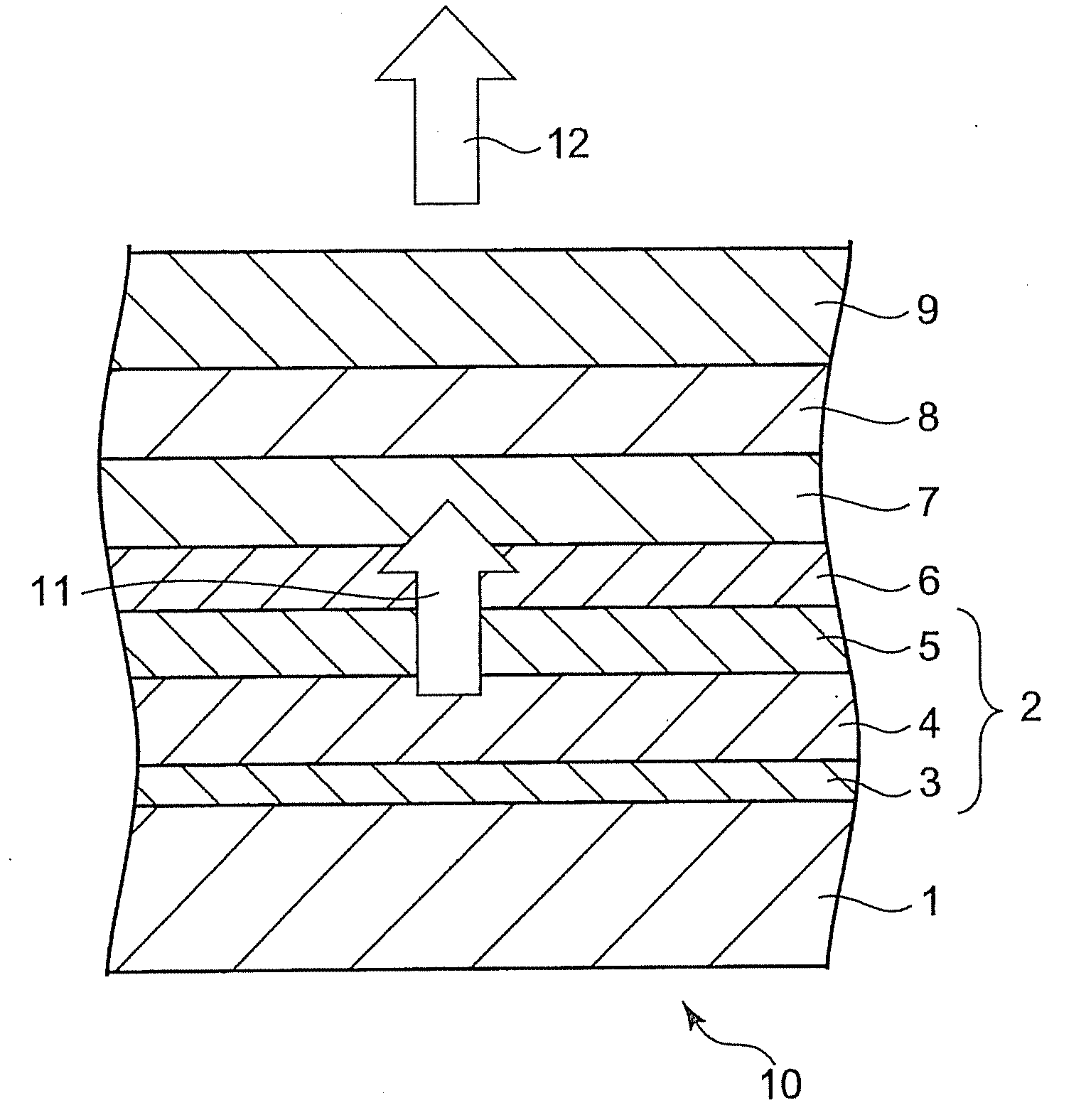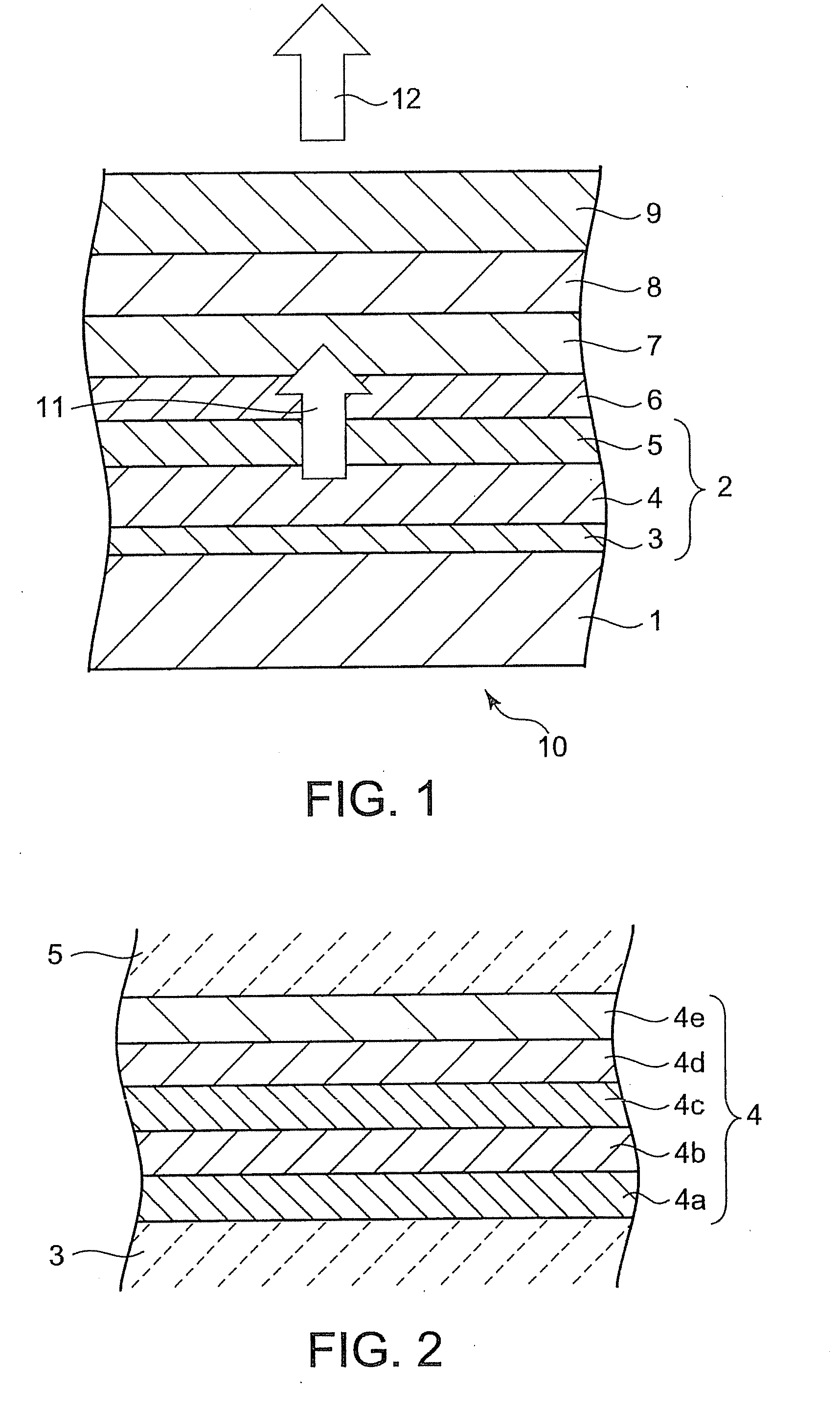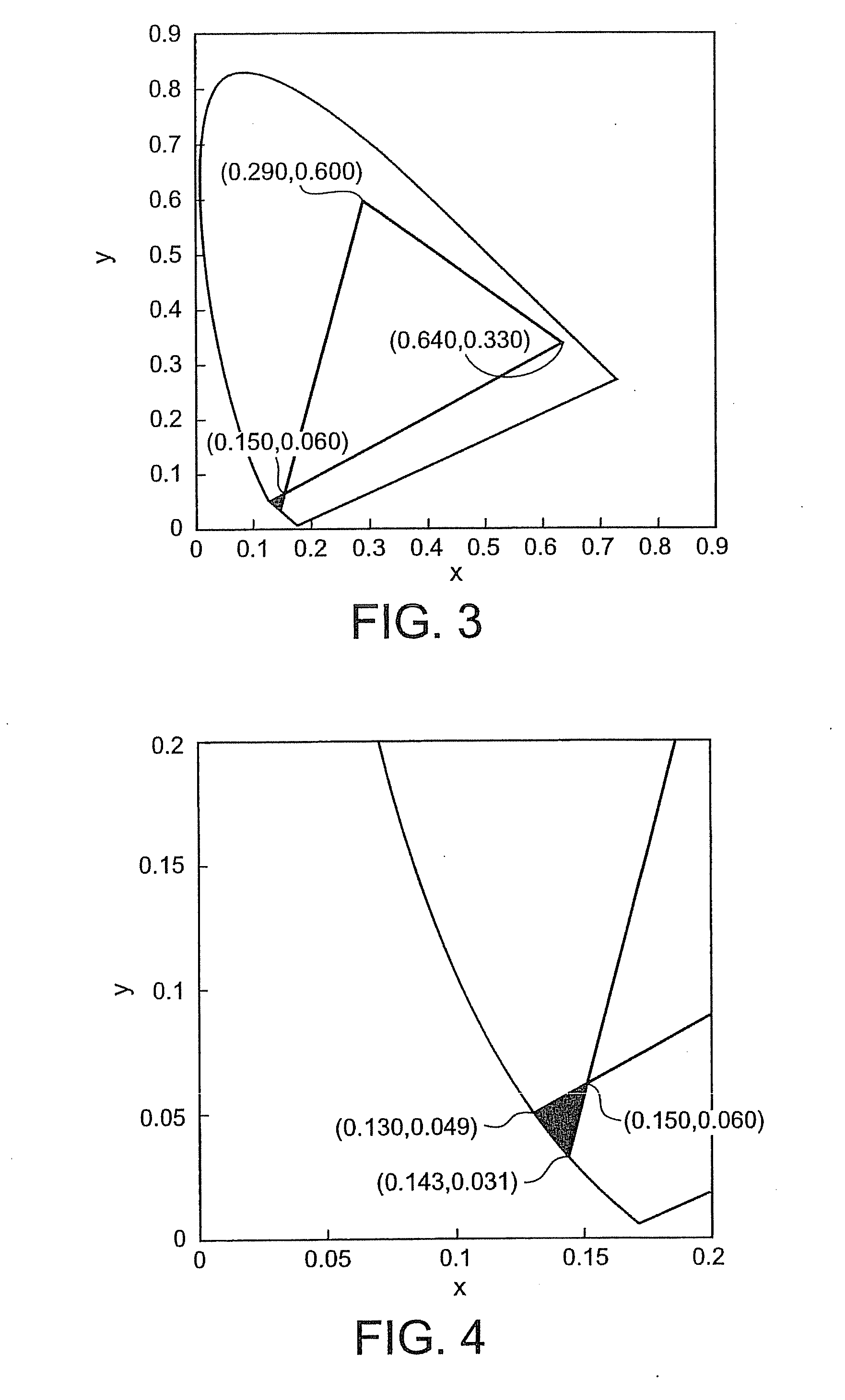Organic el device, color filter, and organic el display
- Summary
- Abstract
- Description
- Claims
- Application Information
AI Technical Summary
Benefits of technology
Problems solved by technology
Method used
Image
Examples
example 1
Production of Organic EL Emitter
[0074]A non-alkali glass substrate with a thickness of 1.7 mm, having thereon a TFT as a switching device, was prepared as the substrate 1. On this non-alkali glass substrate, a reflecting electrode 3, a hole-injection layer 4a, a hole-transport layer 4b, a luminescent layer 4c, an electron-transport layer 4d, and an electron-injection layer 4e were pattern-wise formed in the order named so as to form a blue-light-emitting layer 4 (see FIG. 2). In this process, a layer with a thickness of 140 nm, having the lamination ITO (20 nm) / Ag (100 nm) / ITO (20 nm), was formed as the reflecting electrode 3. Bis(N-(1-naphthyl-N-phenyl)benzidine) (α-NPD) and MoO3 were co-deposited so as to form a 40-nm thick film (MoO3 content: 20% by volume), and this film was used as the hole-injection layer 4a. A 20-nm thick film of α-NPD was deposited as the hole-transport layer 4b. Using 9,10-di-2-naphthylanthracene (DNA), host material, and 1-tert-butyl-perylene (TBP), guest ...
example 2
[0084]A color filter was made in the same manner as in Example 1, except that a dye-containing photoresist was used instead of the pigment-dispersed photoresist, and that the photoresist film, was baked in the clean oven at 180° C. for 30 minutes. Using this color filter, an organic EL device of Example 2 was produced in the same manner as in Example 1. In this Example, the final thickness of the color filter 8 was 1.26 μm. The blue-pattern-forming dye-containing photoresist was prepared by dissolving the following composition.
[0085]Dye-Containing Photoresist for Forming Blue Pattern:
Blue dye (“Basonyl-Blue 636”, a triarylmethane6.0 parts by weightdye manufactured by BASF AG, Germany)Monomer (“SR399” available from Sartomer4.0 parts by weightJapan Inc., Japan)Polymer 1 (the same as in Example 1)5.0 parts by weightInitiator (“Irgacure 907” manufactured by1.4 parts by weightCIBA-GEIGY AG, Germany)Initiator (2,2′-bis(o-chlorophenyl)-4,5,4′,5′-0.6 parts by weighttetraphenyl-1,2′-biimida...
example 3
[0088]A color filter was made in the same manner as in Example 1, except that a lake-pigment-dispersed photoresist was used instead of the pigment-dispersed photoresist, and that the photoresist film was baked in the clean oven at 180° C. for 30 minutes. Using this color filter, an organic EL device of Example 3 was produced in the same manner as in Example 1. In this Example 3, the final thickness of the color filter 8 was 2.51 μm. The following composition was used to prepare the blue-pattern-forming lake-pigment-dispersed photoresist.
[0089]Lake-Pigment-Dispersed Photoresist for Forming Blue Pattern:
Blue lake pigment (“Fanal Blue D6340”6.0 parts by weightmanufactured by BASF AG, Germany)Pigment derivative (“Solsperse 12000”0.6 parts by weightmanufactured by ZENEKA K.K., Japan)Dispersant (“Solsperse 24000” manufactured by2.4 parts by weightZENEKA K.K., Japan)Monomer (“SR399” available from Sartomer4.0 parts by weightJapan Inc., Japan)Polymer 1 (the same as in Example 1)5.0 parts by...
PUM
 Login to View More
Login to View More Abstract
Description
Claims
Application Information
 Login to View More
Login to View More - R&D
- Intellectual Property
- Life Sciences
- Materials
- Tech Scout
- Unparalleled Data Quality
- Higher Quality Content
- 60% Fewer Hallucinations
Browse by: Latest US Patents, China's latest patents, Technical Efficacy Thesaurus, Application Domain, Technology Topic, Popular Technical Reports.
© 2025 PatSnap. All rights reserved.Legal|Privacy policy|Modern Slavery Act Transparency Statement|Sitemap|About US| Contact US: help@patsnap.com



